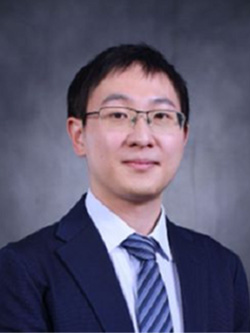
Prof. Lin CHEN
Institute of Engineering Thermophysics, Chinese Academy of Sciences, China
University of Chinese Academy of Sciences, China
Email: chenlinpkucoe@gmail.com; chenlin2018@iet.cn
Tel: +86-10-82545735/18610509260
Dr. Lin Chen is now a full professor in the Institute of Engineering Thermophysics, Chinese Academy of Sciences and jointly at the University of Chinese Academy of Sciences, China. He is currently one Board member of Experts Commission of China Energy Society. He obtained his B.E and PhD in Mechanics (Energy and Resources Engineering) from Peking University. He was previously a JST-CREST and JSPS Research Fellow and an Assistant Professor in Tohoku University, Japan. His current research topics include energy resources, supercritical fluids, soil remediation, advanced measurement technologies. In recent years, he has authored over 160 well-cited international journal papers and/or conference presentations, 16 patents and 7 chapters, 3 books, including the most famous one on energy conversion (“Handbook of Research on Advancements in Supercritical Fluids Applications for Sustainable Energy Systems”, IGI Global, 2021, 821 pages). He revealed the heat transfer laws and stability conditions of supercritical fluid based natural circulation, which is in the TOP5 most-cited list of Elsevier. Recently, he is focused on CO2 based energy system and utilization processes. He is a winner of the President Scholarship, National Scholarship (MOE), Elite Scholar (PKU) and many other honors/awards. He was the winner of the Young Scholar Award of the Asian Union of Thermal Science and Engineering (AUTSE) in 2018 due to his contribution in supercritical fluid thermodynamics. He is currently an Associate Editor of the ASME Journal of Nuclear Engineering and Radiation Science and an Editorial Board member of the Journal of Supercritical Fluids (Elsevier).
Title: Jet Dynamics and Complex Phase Behaviors of Supercritical CO2
Abstract: The physical processes of supercritical and transcritical jets have been found in a wide series of applications such as the separation of substances in chemical industry, and fuel injection in many high-pressure combustion devices including diesel engines, gas turbines and liquid rocket engines. A supercritical jet is associated with the injection of liquid at subcritical temperatures into an environment where the temperature and pressure exceed its thermodynamic critical point. When the receiving chamber is in subcritical state, a trans-critical jet can be found. The quantitative measurement of transcritical jet under the influence of high pressure effect and transient effect is the key issues in such analysis. In this talk, an improved phase-shifting interferometer system with high temporal and spatial resolution (0.001 s, 3.45 μm) has been realized by pixelated-array masked method to investigate characteristics in trans/supercritical jet processes. The transient density field and boundary structure of the phase-transition interface during four jet processes under sub/trans/supercritical conditions were quantitatively measured. The results show that the characteristic of subcritical jet is with fragmentation and atomization within the experimental cell due to the presence of interfacial tension and strong density pulsations. The atomization is suppressed by high pressure effect in supercritical jet. Instead, single-phase mixing occurs due to the absence of surface tension. Discussions on the transition process from “liquid-like” and/or “gas-like” phases during a jet flow are also made based on the measurement resutls.